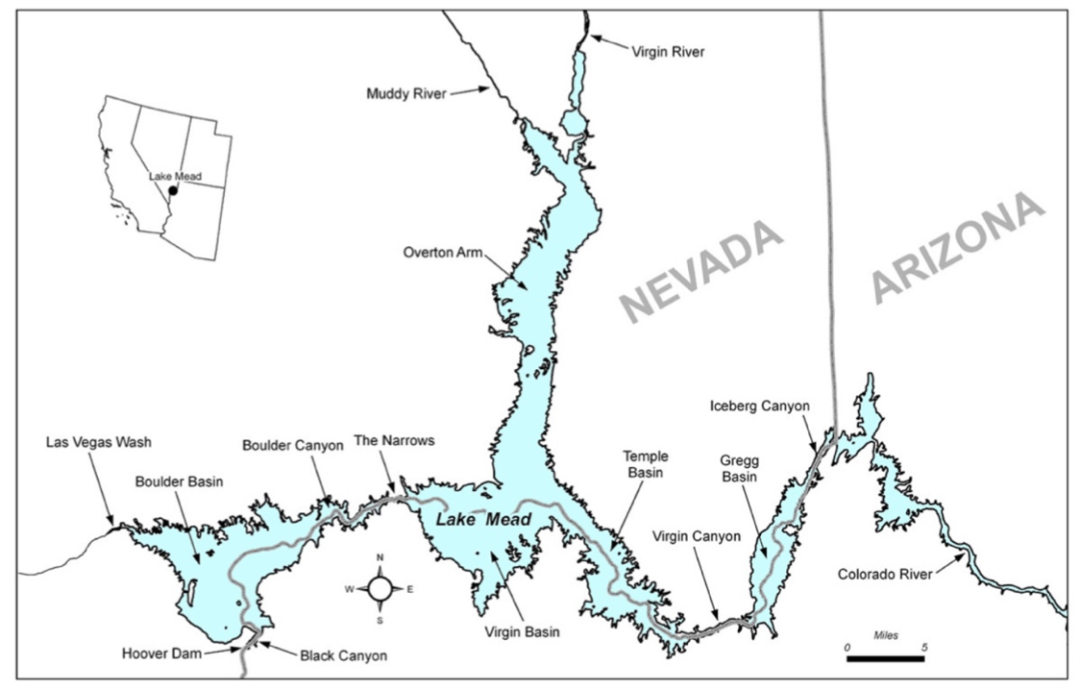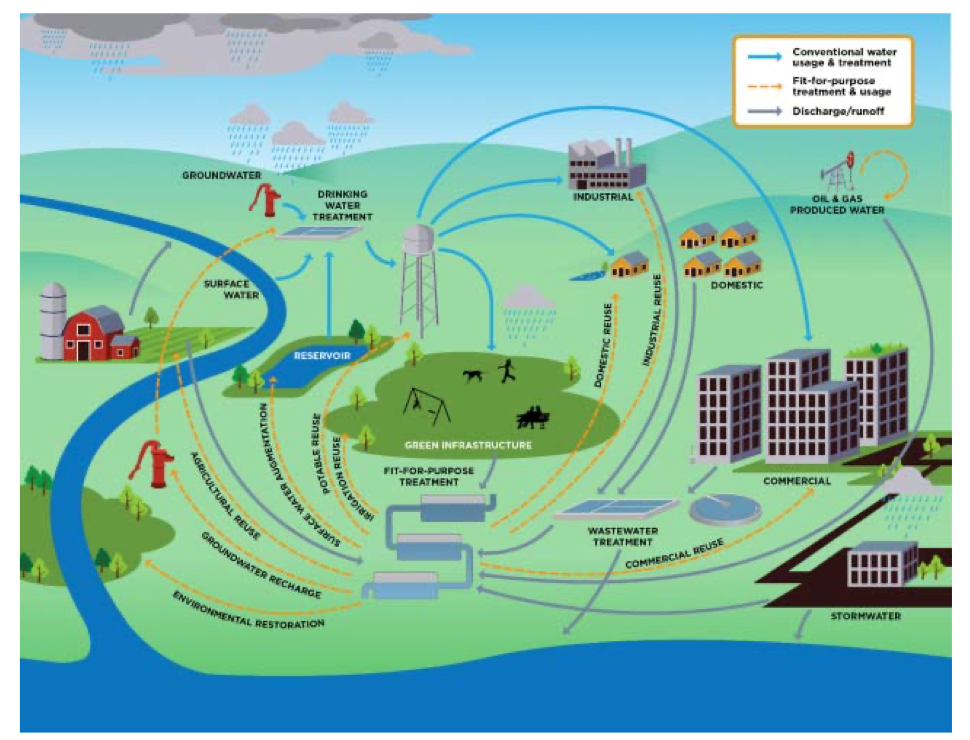- 翰林提供学术活动、国际课程、科研项目一站式留学背景提升服务!
- 400 888 0080
2021HIMCM数模竞赛B题
2021HiMCM数模学术活动B题
Problem B
Problem B: Tackling the Drought
Background
Lake Mead, a Colorado River reservoir on the Nevada-Arizona border, is the largest water reservoir in the United States (Figure 1). In the summer of 2021, Lake Mead registered its lowest level on record since its initial filling in the 1930s. Drought, fueled by climate change, along with increasing demand for water by the 25 million people Lake Mead serves, has shrunk this reservoir to approximately 36 percent of its full capacity. On August 16, 2021, the Bureau of Reclamation announced the first-ever water shortage declaration on the Colorado River[1], Initially, this Tier 1 water shortage declaration results in reduced water deliveries to the states of Arizona, Nevada, and New Mexico with agricultural communities being the first to feel the cuts.

figure 1: Lake Mead Overview (National Park Service[2])
As droughts around the world have been increasing, researchers continue to develop means to recycle water more efficiently and effectively. One method is to recycle wastewater that flows out of our sinks, toilets, and showers. You may think this is impossible (and perhaps disgusting), but this technology already exists and is improving. Under most current circumstances, this wastewater goes through several treatment processes prior to being released into local waterways. Figure 2 shows examples of water sources and use applications. A treatment facility uses various techniques to meet fit-for-purpose specifications. These specifications are the requirements necessary to bring water in from a particular source, treat itto get it to the quality level needed for a particular purpose, and then make it available for that purpose. Some purposes include agricultural irrigation, domestic water supply (to include drinking water), industrial and commercial use, and recharging groundwater.

Figure 2. Examples of water sources and use application for recycled water (Environmental Protection Agency[3])
Requirements
Your team decides to use Lake Mead to investigate and learn more about drought impact on water reservoirs, and to consider the recycling of wastewater as a solution to water shortages. As you begin your investigation, we provide the following information:
- The level of Lake Mead is measured by elevation of the water surface in feet abovemean sea level.
- The area of Lake Mead is measured in acres.
- The volume of water in Lake Mead is measured in acre-feet.
Table 1 shows the relationship of elevation, area, and volume of Lake Mead as calculated by the Bureau of Reclamation in 2010[4].

Table 1. Area and Volume of Lake Mead by Elevation Level
1.Lake Mead Volume. The amount of water in Lake Mead is a function of inflow, outflow, and loss. The Colorado River provides over 96% of the inflow with additional water coming from three other tributaries, as well as direct precipitation on the lake surface. Outflow occurs through releasing water (for example, through a dam) and consumption directly from the lake. Loss occurs through evaporation.
a.Identify and describe factors that impact inflow, outflow, and loss in Lake Mead. Discuss the relationship of these factors and their relative influences on the volume and water level of Lake Mead.
b.Lake Mead has a very irregular shape and varying depths throughout. Consider how you would verify the elevation, area, and volume relationships shown in Table 1. Describe what information and data you would need and discuss how you would use mathematics to calculate these measures. Note: You are NOT required to obtain these data or calculate the measures.
2.Lake Mead Water Level. The two problem data files provide information about Lake Mead water levels given by elevation in feet above mean sea level.
a. Consider the data provided. Briefly discuss overall patterns in the historical data for Lake Mead water levels. Define your criteria for drought periods and identify the beginnings and ends of periods of drought. Comment on how the most recent drought period compares to earlier ones.
b. Develop two models for the water level in Lake Mead as a function of the year. Use each model to predict the water level in Lake Mead in the years 2025, 2030, and 2050. Compare and evaluate your two models and their predictions.
Model 1: Consider data from only the most recent drought period and assume the most recent drought period's pattern continues.
Model 2: Use water level data from 2005 - 2020 and assume this period's pattern continues.
3. Based on your models and water level predictions in Part 2, address the impact on future water usage demands and consider if the recycling of wastewater could make up all or a part of any future shortfalls.
- a. Identify and describe the factors you would include in a plan to recycle wastewater.
Consider the decisions local leaders would need to make and the priorities they might set that would impact your plan. - b. Describe your plan and how you would measure the impact of implementing your plan.
4. Write a one-page non-technical news article reporting the key takeaways and recommendations from your investigation.
Your PDF solution of no more than 25 total pages should include:
- One-page Summary Sheet.
- Table of Contents.
- Your complete solution.
- One-page Article.
- References list.
Note: The HiMCM Contest now has a 25-page limit. All aspects of your submission count toward the 25-page limit (Summary Sheet, Table of Contents, Reference List, and any Appendices).
Attachments
Attachment A: 2021 HiMCM LakeMead MonthlyElevationData. xlsx Elevation of water at Lake Mead (in feet above sea level) at the end of each month by year from 1935 to 2021. Bureau of Reclamation data found at https://www. usbr. gov/lc/riverops. html.
Attachment B: 2021 HiMCM_LakeMead_LowHighElevationData. xlsx The highest and lowest water elevation at Lake Mead (in feet above sea level) by year.Bureau of Reclamation data found at https://www. usbr. gov/lc/riverops. html.
Glossary
Bureau of Reclamation: a government agency that manages, develops, and protects water and related resources in the seventeen western states of the Unites States.
Elevation: a measure of height indicated by the number of feet above mean sea level.
Fit For Purpose Specifications: a description of construction design that indicates the facility (in this case a particular type of water treatment facility) meets the requirements for its specific intended use.
Inflow: the water entering a body of water.
Mean Sea Level: an average level of the surface of the sea used as a reference or base level to measure height or depth on Earth.
Outflow: the water leaving a body of water.
Wastewater: the polluted form of water that comes from homes, businesses, industrial processes, or rainwater runoff. Wastewater includes water from household uses such as showering, dishwashing, laundry and, of course, flushing the toilet.
References
[1] Bureau of Reclamation. "Reclamation Announces 2022 Operating Conditions for Lake Powell and Lake Mead."August 16, 2021. Found at: https://www. usbr. gov/newsroom/#/news-release/3950.
[2] National Park Service. "Overview of Lake Mead."Updated September 2, 2020. Found at https://www. nps. gov/lake/learn/nature/overview-of-lake-mead. htm.
[3] United States Environmental Protection Agency. "Basic Information about Water Reuse."
Updated June 4, 2021. Found at https://www. epa. gov/waterreuse/basic-information-about-water-reuse.
[4] National Park Service. "Storage Capacity of Lake Mead."Updated August 5, 2019. Found at https://www. nps. gov/lake/learn/nature/storage-capacity-of-lake-mead. htm.

最新发布
© 2025. All Rights Reserved. 沪ICP备2023009024号-1









